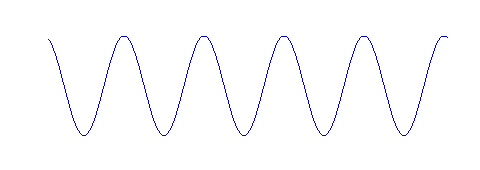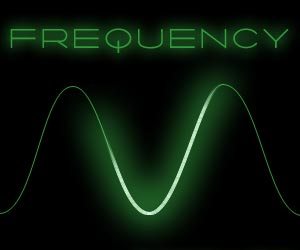Intro To Waves Quiz

- 1.
The two types of waves are transverse and ___________.
- A.
Compressive
- B.
Longitudinal
- C.
Mechanical
- D.
Sound
Correct Answer
B. LongitudinalExplanation
The two types of waves are transverse and longitudinal.Rate this question:
-
- 2.
What kind of wave is shown in the animation?
Correct Answer
Longitudinal, longitudinal waveExplanation
This shows a longitudinal wave, since the vibrations are parallel to the direction of travel of the wave.Rate this question:
- 3.
The distance between two peaks on a transverse wave is called the _____________.
- A.
Amplitude
- B.
Frequency
- C.
Time Period
- D.
Wavelength
Correct Answer
D. WavelengthExplanation
The distance between two peaks on a transverse wave is called the wavelength. Wavelength is a fundamental property of waves and is typically represented by the Greek letter lambda (λ). It is measured as the distance between corresponding points on two consecutive waves, such as the distance between two adjacent crests or troughs. Wavelength determines the characteristics of a wave, such as its energy and frequency. It is inversely proportional to the frequency of the wave, meaning that longer wavelengths correspond to lower frequencies and vice versa.Rate this question:
-
- 4.
Increasing the frequency of a wave causes the wavelength to ______________.
Correct Answer
DecreaseExplanation
If the frequency increases, there are more waves generated/transmitted per second. This means the distance between each wave decreases.Rate this question:
- 5.
In a transverse wave, the movement of particles is ______________ to the direction of travel of energy by transferred the wave.
Correct Answer
Perpendicular, at right angles toExplanation
In a transverse wave, the movement of particles is perpendicular to the direction of travel of the wave. This means, for example, if the wave is moving from left to right, the particles will be moving up and down.Rate this question:
- 6.
A wave transfers matter without transferring energy.
- A.
True
- B.
False
Correct Answer
B. FalseExplanation
In all waves, the particles (matter) vibrate around a fixed position, but energy is transferred along the wave.Rate this question:
-
- 7.
In a longitudinal waves, the direction of movement of the particles is ________________ to the transfer of energy of the wave.
- A.
Parallel
- B.
Perpendicular
- C.
Diagonal
- D.
Irrelevant
Correct Answer
A. ParallelExplanation
In a longitudinal wave, the particles move back and forth in the same direction that the wave is moving. This means the direction of movement of the particles is parallel to the direction of movement of the wave.Rate this question:
-
- 8.
Which of the following is an example of a longitudinal wave?
- A.
Light
- B.
Ripples in water
- C.
Radio
- D.
Sound
Correct Answer
D. SoundExplanation
Only sound is a longitudinal wave from the above options, the rest of the waves are transverse. In sound the air particles move backwards and forwards in the same direction as the direction the sound is moving.Rate this question:
-
- 9.
Tick all the words that apply to longitudinal waves.
- A.
Compression
- B.
Rarefaction
- C.
Peak
- D.
Wavelength
Correct Answer(s)
A. Compression
B. Rarefaction
D. WavelengthExplanation
Compression and rarefaction only apply to longitudinal waves. Both transverse and longitudinal waves have wavelengths, but only transverse waves have peaks and troughs.Rate this question:
-
- 10.
Which is the best definition of the word "frequency"?
- A.
How tall each wave is
- B.
How many waves pass a point every second
- C.
How quickly the waves are moving
- D.
How close together waves are
Correct Answer
B. How many waves pass a point every secondExplanation
The best explanation is how many waves pass a point every second OR how many waves are generated every second. For example, a wave with frequency of 500 Hz means 500 waves are generated every second.Rate this question:
-
Quiz Review Timeline +
Our quizzes are rigorously reviewed, monitored and continuously updated by our expert board to maintain accuracy, relevance, and timeliness.
-
Current Version
-
Mar 21, 2023Quiz Edited by
ProProfs Editorial Team -
Feb 11, 2016Quiz Created by
JBrammah
 Back to top
Back to top












